
Namibia - 12 night Road Trip of a Lifetime
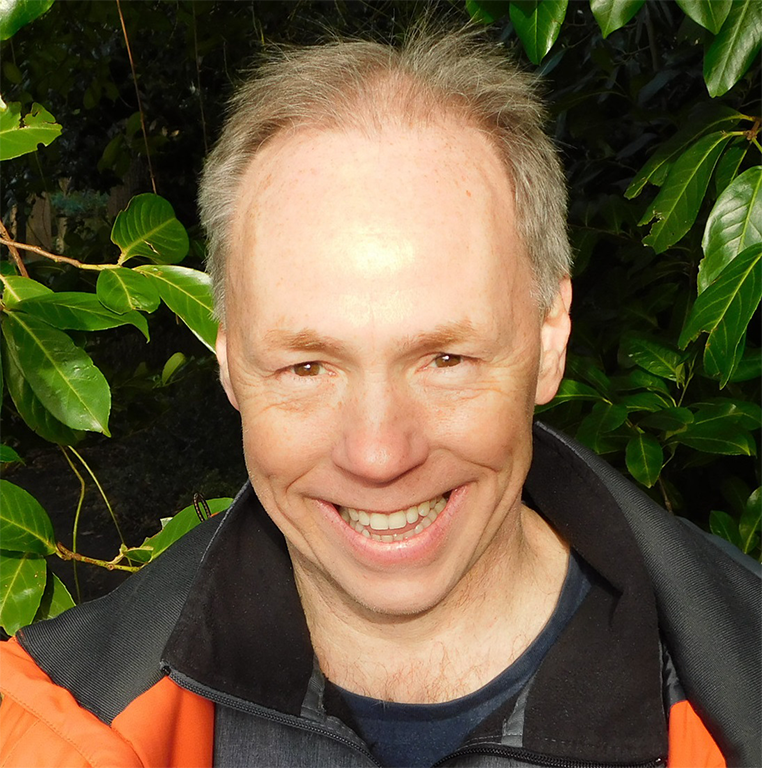
I've wanted to go to Namibia ever since reading about the incredible wildlife and seeing the surreal desert landscapers in various photography magazines., and a few years ago I finally made it!
We hired a car and travelled over 13 days in a circular route, everywhere being a completely different stop with lots of unique experiences. There's not much I'd change unless you had a much longer or shorter time available.
One of the highlights has to be Etosha National Park where we sat and watched an enormous amount of wildlife at some of the many waterholes and took some wonderful photographs. In fact, all the images on this page are from this trip!
Driving is very easy for the most part as the roads are paved and in a good condition, and not busy. Etosha's tracks are not paved though, so a 4x4 is necessary due to the uneven surface there.
If you like the sound of this, please feel free to contact me by phone, email or on the contact form - I help people put together tailor made Namibia holidays. You can book this as it is or tweak it to your liking.
For Expert Advice:
Call 01462 677 111
Email holidays@onyourtravels.co.uk
Fly from the UK to Windhoek and collect your 4x4 car. Just outside Windhoek is a wonderful lodge that makes a great base for the first night and has spectacular views of the surrounding hills and countryside.
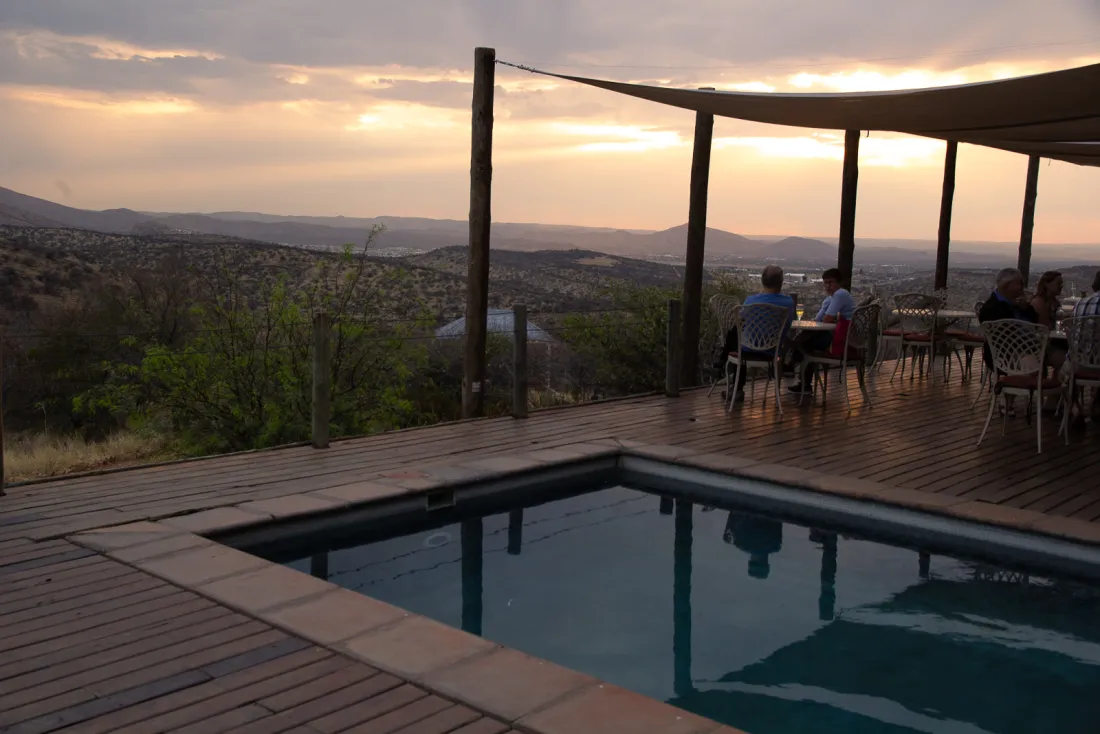
Next morning, drive to the Kalahari Desert and a very special lodge situated by huge red sand dunes. There are lots of animals on site including meerkats, antelopes, zebras, oryx, and all of these are easy to spot. It's also a recognised site for conservation of cheetah, with the chance to get up close and personal to the orphans.
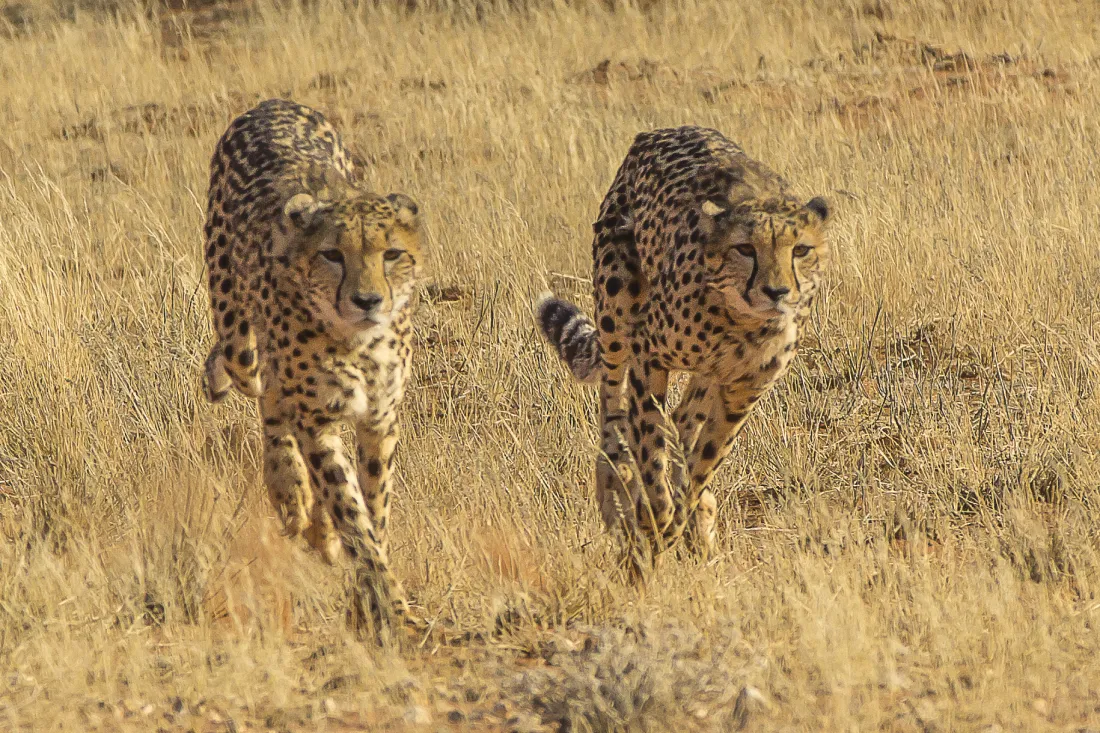
Next, it's a stunningly beautiful drive to your next lodge, looking out for oryx along the way. This is the base for visiting the iconic Big Daddy Sand Dune, one of the biggest in the world, and the bizarre and surreal Deadvlei, a clay pan with dead trees from 900 years ago that have not decomposed due to the extremely dry conditions.
The best way to visit Deadvlei is to get there EARLY - the light is magnificent first thing in the morning and you avoid the crowds. Drive as far as you can, and special 4x4 vehicles will take you the rest of the way
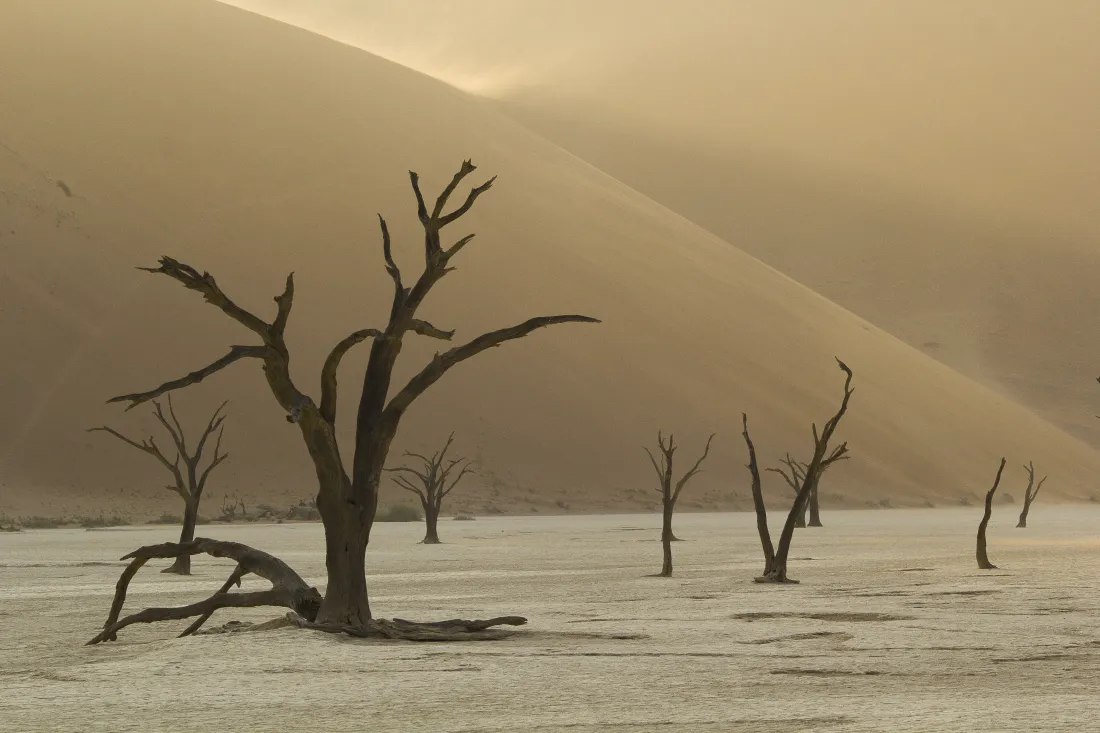
Next, drive north to the charming coastal resort of Swakopmund and it's a chance to stock up on any essentials you might be needing. There's a strange mist that often engulfs the town, which definitely feels much cooler than elsewhere. There are a number of pleasant beach walks close by.
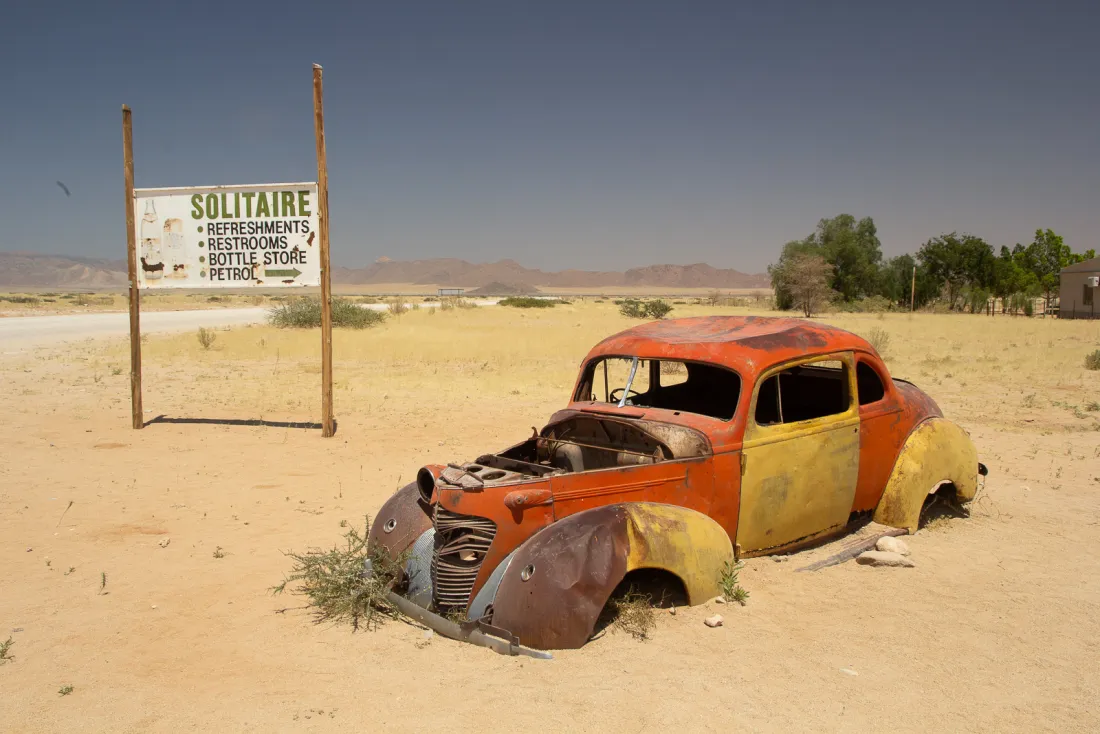
The drive to Etosha National Park is quite long so this is another stunning place to break the journey. You can just relax and enjoy the scenery or perhaps visit some of the rock paintings. Look out for wildlife around the resort such as zebras.

Next, drive to Etosha National Park and enjoy world class wildlife watching during your stay here. The animals can be seen at several waterholes located throughout the park, so your day may be spent driving from one to the other. On a self drive, you can stay as long as you like by the waterholes which is a big advantage when there's something special to see.
The 3 night stay featured here gives you 2 full days, but this can be increased if you'd like to spend longer. For example after your stay at Okaukuejo Resort, you could move to the eastern side of the park for a couple of nights.
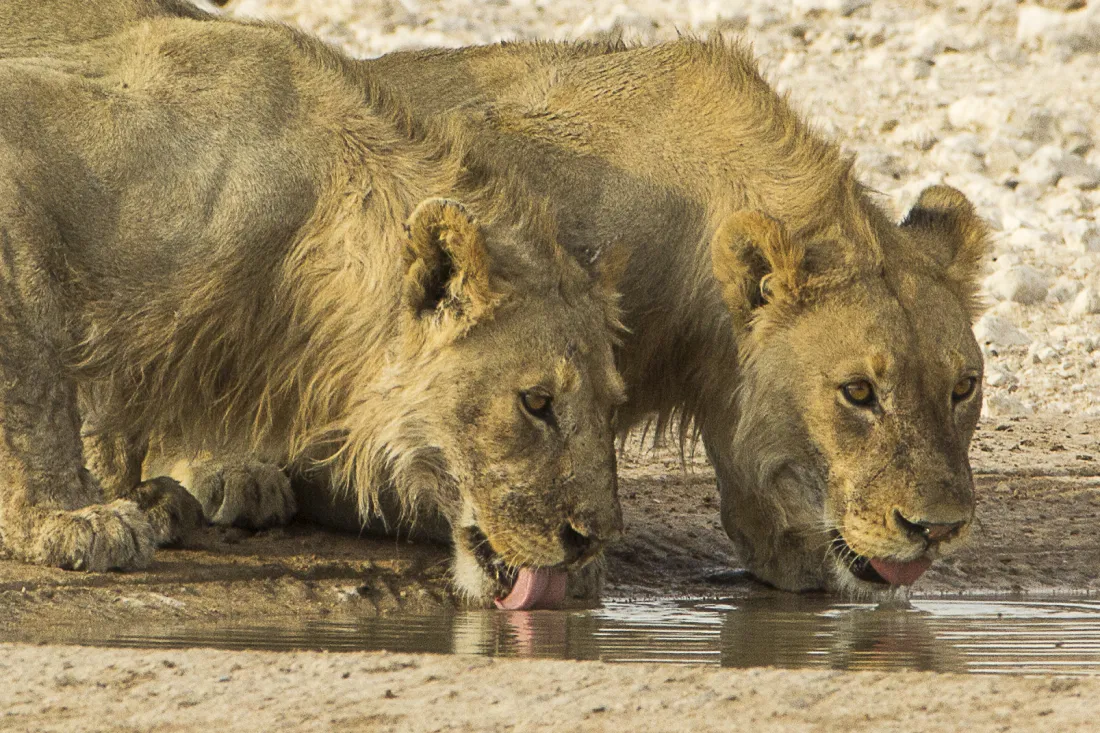
Sadly it's time to leave Etosha and drive back to Windhoek. The lodge you stayed in on your first night also makes a great base for the last night.
Then next morning take your car back to the airport for your flight home.
Guide Prices
As a very rough guide, this trip usually costs somewhere between £5,000 and £6,000 per person, but it does vary. It is essential to book early as many of the properties can be fully booked several months in advance.
What's Included?
- Flights to and from the UK
- Car hire - this will be a 4x4
- All accommodation
- Meals as specified
Plus, you'll always get:
- Assistance during your holiday in an emergency (24 hour emergency line)
- Liaising with hotels and tour operators for any special requests, dietary requirements or mobility issues
- Deal with one person from your initial enquiry to returning home
- Contact us however is convenient for you - phone, email or if you live reasonably locally, in person
- Full ATOL protection - this is your financial protection
- Full package protection - this ensures you receive the holiday you paid for
Tom's Trip Report
Namibia has always been on my list of places to visit, so I was thrilled when we finally got there! On previous trips to Africa I'd always enjoyed safaris as part of a guided tour, so self driving was different. The roads were for the most part excellent, but with no mobile phone signal in some areas I did wonder what I'd do if we broke down.
I've seen Deadvlei in many photographic books and magazines over the years, but until actually you get there it's hard to appreciate the beautiful light especially first thing in the morning when the sun has just come up. Going at that time was a very good move as there weren't many people about.
Etosha was a bit more challenging in terms of the driving as the roads aren't paved and were quite bumpy. I was quite surprised how few other cars and vehicles were there (this was high season) compared to other game parks in Africa. Only once did it feel crowded, and that was when there was a long stand off between lions and elephants, lasting for a tense couple of hours, and nobody wanting to miss what happened.
Back at the camp, there was a waterhole just a 2 minute walk from our room with constant coming and going of wildlife. The location of it was unbelievable although it had by far the most basic rooms on the trip.
It's hard to think what I'd have done differently in terms of the itinerary. There is a ghost town being swallowed up by the sand which I wanted to try and get to, but it would have meant a couple of extremely long drives and of course an extra couple of days. Perhaps going to the other side of Etosha as well for a couple of nights would enhance the holiday. I didn't quite realise how good or easy the wildlife viewing would be.
For a selection of images from this trip, please see www.onyourtravels.co.uk/photo-collection/namibia.
What months are best for travel to Namibia?
Here's a quick guide to all the months of the year. Assuming wildlife viewing is one of the most important factors in determining which month to travel, then September and October would be my choice.
As Namibia is in the Southern hemisphere, its winter is in our summer months. It will be cooler, and even very cold in desert areas especially at night, but the reduced humidity means less rain, and so better for watching wildlife.
January - ok time to travel - can be hot and humid, possible rain, wildlife a bit more spread out
February - ok time to travel - can be hot and humid, possible rain, wildlife a bit more spread out
March - ok time to travel - starting to get a little cooler and less rain
April - good time to travel - cooler and less rain
May - very good time to travel - with less rain the wildlife viewing is better
June - excellent time to travel although starting to get cool
July - excellent time to travel although can be cool
August - excellent time to travel although can be cool
September - perfect time to travel - it's been dry for some time so water is more scarce meaning excellent game viewing
October - perfect time to travel - it's been dry for some time so water is more scarce meaning excellent game viewing
November - good time to travel, starting to get hotter, bit more chance of rain
December - ok time to travel - some rain which means wildlife a bit more spread out
Home / Work Visits
Areas Covered: Hertfordshire, Cambridgeshire, Bedfordshire, Huntingdonshire, Buckinghamshire, Central London, and some other areas.
 If you would prefer to discuss your travel plans face to face, I am delighted to be able to offer home / work / cafe visits at a time to suit you. Appointments typically last 20-30 minutes, and any quotes would normally follow 2-3 days later by email.
If you would prefer to discuss your travel plans face to face, I am delighted to be able to offer home / work / cafe visits at a time to suit you. Appointments typically last 20-30 minutes, and any quotes would normally follow 2-3 days later by email.
The cost of this service is £60 however this is taken off the final holiday balance, and if you decide not to go ahead with the holiday then you can use the £60 as a credit towards another trip in the next 12 months.
To make an appointment, please call, email or use the form below!

